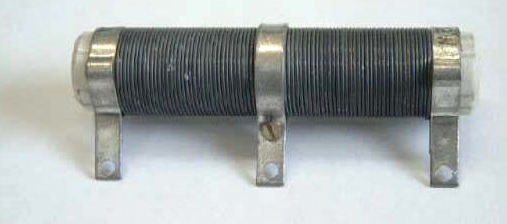wire-wound resistor
The wirewound resistor is a type of resistor consisting of an insulator with a single-layer winding of a resistance wire. In addition, there are also designs without an insulator. Materials with high resistivity such as copper- nickel alloys, manganese and constantan are used as resistance wire.
Wire resistors are characterized by a high load capacity, high constancy as well as low noise and are temperature stable. However, they are frequency dependent because the wound resistance wire forms a disturbing inductance at higher frequencies. A bifilar winding reduces the inductance considerably. Wirewound resistors are often used as power resistors in the low impedance range below 100 ohms and in precision applications because of their high load capacity. They are available with resistance values as low as 10 kilo-ohms, and with power values from a few watts to several hundred kilowatts.
Wire wound resistors can be used at high temperatures of up to 800 °C and are characterized by high dissipation. They are stable over long periods and at high temperatures. Important characteristic values for wire-wound resistors are the temperature coefficient, which for wire-wound resistors is about 3 ppm/°C, the stability of the resistance value is 0.05 % after 2,000 hours, and the resistance to electrostatic discharge( ESD) is 5,000 V.

